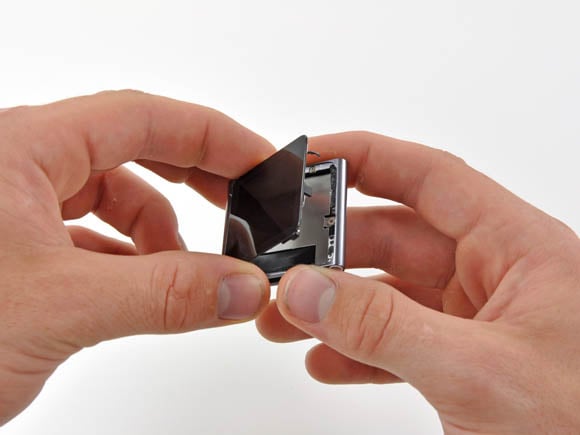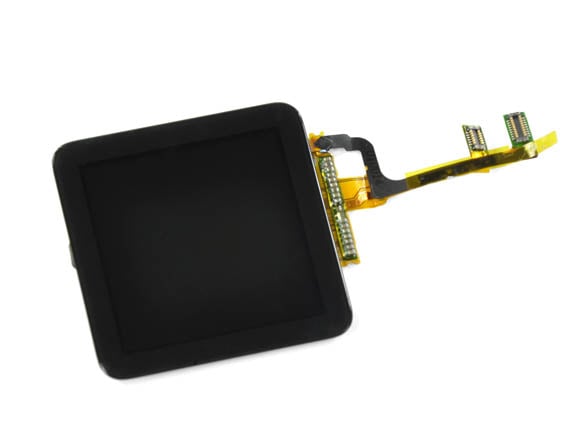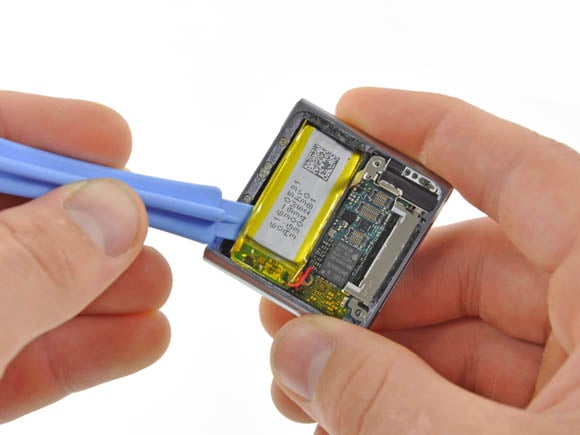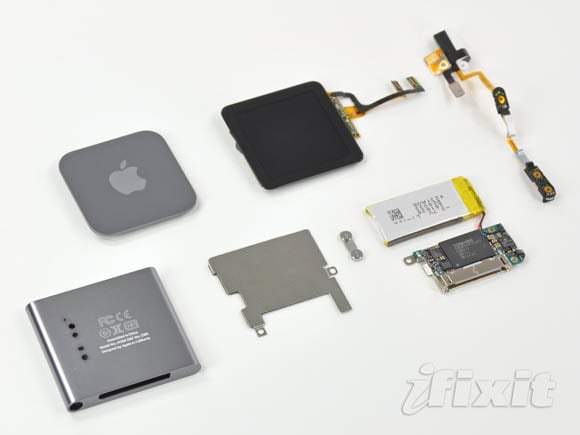This article is more than 1 year old
Multi-touch iPod nano stripped bare
Get your heat gun and come inside
Photos Apple new sixth-generation iPod nano "is more like a Shuffle with a screen than a Nano with true multi-touch" says Kyle Wiens, CEO of iFixit, the parts-and-repairs website that glories in dissecting electronic devices to discover what makes them tick.
iFixit's teardown of the purportedly multi-touch iPod nano led Wiens to the conclusion that: "Apple is seriously reaching by calling the Nano 'multi-touch'."

The sixth-generation kindasorta multi-touch iPod nano (source: Apple)
Wiens has a point. Apple's support page for the iPod nano indicates that the device supports only one multi-touch gesture: a two-finger screen-rotation.
He also notes, however, that "reliable sources" have informed him that Apple's internal docs suggest that the device has support for a pinch-to-zoom gesture. "Was this feature cut at the last minute?" he asks. "Could it be added back in with a software update?"
Despite the iPod nano's limited multi-touch capability, iFixit's teardown found a lot to like about the nano — and a few aspects less likable. The following are just a few images from their dissection, but you can find the entire 28-photo dismemberment here.

The nano's 1.54-inch, 240-by-240 pixel TFT display is glued onto the case
Removing the display from the case requires a heat gun to melt the glue which attaches it — a process that iFixit describes as being similar to how they opened up Apple's new fourth-generation iPod shuffle.
Interestingly, the display sticks out about 0.3mm above the case. Why? Weins speculates that Apple installed it thusly to make room for the nano's headphone jack. "Apple wanted to keep the device as thin as possible," he hypothesizes, "and the curvature of the edges would have forced the case to be thicker for a completely flush glass panel."

The tininess of the iPod nano's display may be why Apple omitted video playback from this model
iFixit notes that the display, like that of the iPhone 4 and the iPod touch, is a single unit with the touchscreen, TFT LCD, and protective front glass all "inseparably bonded."
The teardown also revealed that the display is exceptionally thin: 2.27mm, compared with the new iPod touch's 2.93mm display and the iPhone 4's 3.05mm unit.

The nano's battery is one component that's unfortunately soldered to the logic board
A number of internal nano-component ribbon cables — the display and headphone jack-power/volume-button cables, for example — aren't soldered on, but are instead attached by pop-off connectors. Connecting them this way makes the nano easier to repair — "Thank you Apple," say the device fixers at iFixit.
The nano's lithium-ion battery — the yellow item in the image above — is rated at 105 milliampere-hours, more than double the shuffle's 51mAh. iFixit surmises that the boost is needed to power the display — a reasonable assumption.

Not included in this group shot are the eleven screws that hold together various components
On a scale of one to ten, iFixit rates the sixth-generation iPod nano as a five when it comes to repairability. By comparison, they rated the new iPod shuffle a two and the new iPod touch a four.
Repairing something rather than simply tossing it away and buying a new shiny-shiny is iFixit's raison d'être. If you want to fix your stuff or contribute your own "fix-it-don't-toss-it" expertise, check out the company's crowd-sourced repair-guide collection. ®
